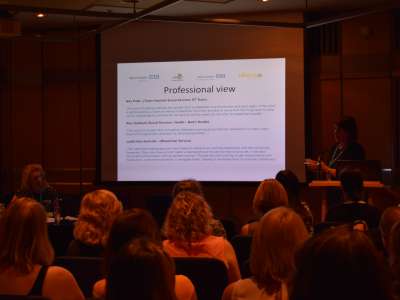
I recently joined the Rehabilitation Engineering Unit in Swansea, working closely with the South Wales Posture and Mobility Service. Although qualified as an occupational therapist for over 11 years, this is my first experience of a specialist service. Having previously worked in several different services including community, in-patient and out-patient settings, my knowledge base was broad and general, compared to the specialist nature of posture management. Entering into the field of specialist seating naturally caused feelings of trepidation but, when I received a bursary to attend the PMG Conference 2016, I knew it would provide an opportunity to meet skilled clinicians, company representatives and engineers who would be willing to impart their knowledge, expertise and enthusiasm.
During my three days at the event I heard many worthwhile presentations, and also spent time talking to several of the professionals presenting their posters. It’s therefore difficult to pick out presentations of note, because the overall standard was very high, all provoking interesting ideas and discussion. However, I will reflect on the presentation Joint Funded Seating delivered by -
Alexandra Hadayah of Barts Health NHS Trust, London [Image shows Alex presenting at PMG Conference 2016. Photograph courtesy of Suzie Hunt]
Lynne Hatch, Regional Head of Clinical Services, Whizz Kidz
Carol Karaca, Service Manager, Tower Hamlets Wheelchair Service (THWS)
Their presentation was about a pilot scheme in east London, where collaborative working and joint funding between social services and the wheelchair service provides specialist seating in the form of a wheelchair. The wheelchair is purchased through the social care fund, but its care and maintenance is the responsibility of THWS. Joint assessment is carried out by a multi-disciplinary team working for the NHS and social care.
The scheme encourages clients to consider their wheelchair as their main seating system, thus reducing the expectation that service users need a wheelchair and a static seating system. Having direct experience of the issues raised by this pilot, I spoke to Carol Karaca afterwards to find out if they had met with any resistance to the change in provision. Carol stated that they’d met very little, if any, resistance, which she put down to the way the provision of just one seating system was presented to the service user. Rather than focusing on the removal of the static seating, she feels providers should emphasise the benefits of having a wheelchair which provides the postural support that the individual requires. Furthermore, she maintains that wheelchairs set up specifically to support people with complex postural management needs can increase their independence, help conserve energy and manage fatigue, help them cope with pain, maintain clear airways, aid with digestion, reduce the risk of pressure ulcers, promote social inclusion and engagement in purposeful occupations/activities. Carol maintained that providing higher specification wheelchairs could reduce the desire for multiple seating options.
Whilst fundamentally agreeing with the approach of this pilot scheme, I can think of several people who would be very reluctant to give up their static seating system, or their ‘comfy chair’. When this issue has arisen with some of my clients, they state that, although they see their wheelchair as an invaluable mobility aid, they don’t wish to use it as their main seat, regardless of the benefits it can provide. When spending time with their families and friends for example, static seating helps make their disability less obvious. Also, for less active users who need specialist seating on a wheelchair base, but who spend large amounts of time at home, an additional static seating system might be more appropriate.
There is no doubt that as clinicians we should be client led. However, in this time of austerity, changes to budgets and restructuring, services are forced to consider the financial implications of equipment provision. If that means being more creative in our collaborative work and in our interventions, then pilot schemes like this have a valuable part to play in identifying the best way forward for our clients.
This was only one of the many thought-provoking presentations I attended at PMG Conference 2016, with every presentation proving invaluable to my professional development within the specialist posture and mobility service.
I was also very proud of my Swansea colleagues:
Mark Bowtell presenting OxPUPIS – working collaboratively to improve patient outcomes in the same parallel session as the presentation described above; and
Jennifer Bramley who presented her MSc project Evaluation of custom-made seat cushions: pressure relief characteristics as a free paper.
Thank you to PMG






.jpg)



no comments
Add your comment...